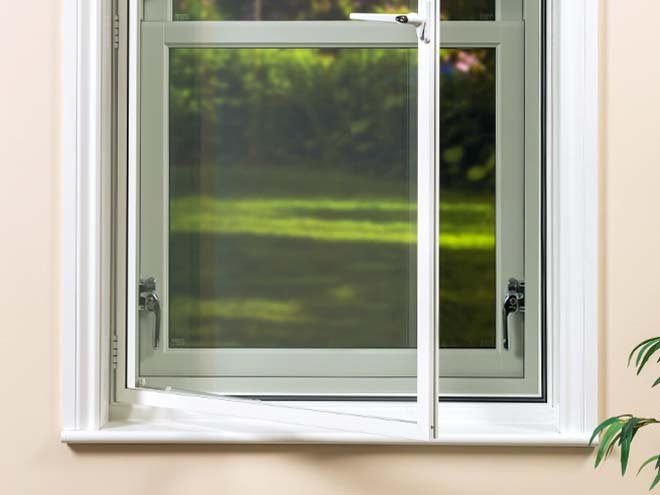Steps to Install Secondary Glazing on Sash Windows
Measuring the Window
Before starting the installation process, it’s essential to measure the window accurately. The measurement process is simple and straightforward. First, measure the width and height of the sash window frame. Then, measure the depth of the window frame, which is the distance between the inside face of the window frame and the glass surface.
Once the measurements are taken, it’s important to add a few millimeters to the width and height of the frame to ensure that the glazing sheet fits perfectly. The additional millimeters will also allow for the insertion of the glazing sheet and the fitting of the beading.
Cutting the Glazing Sheet
The next step is to cut the glazing sheet to the correct size. It’s essential to use a high-quality, clear plastic glazing sheet that is suitable for secondary glazing. The sheet should be cut to the same size as the window frame, including the additional millimeters added during the measurement process.
To cut the glazing sheet, place it on a flat surface and use a sharp knife or a pair of scissors to cut along the marked lines. Ensure that the edges are smooth and straight to ensure a perfect fit.
Securing the Glazing Sheet
Once the glazing sheet is cut to size, it’s time to secure it to the window frame. The first step is to clean the window frame thoroughly to ensure that the adhesive tape sticks properly. Then, apply the adhesive tape around the edges of the window frame, leaving a gap of a few millimeters between the tape and the frame.
Next, carefully place the glazing sheet onto the adhesive tape, ensuring that it is centred and level. Press the sheet firmly onto the tape to ensure a secure fit. Finally, install the beading around the edges of the glazing sheet to hold it in place.
According to Sash Window Refurbish, with these simple steps, anyone can install secondary glazing on sash windows quickly and easily. It’s an affordable and effective way to improve insulation, reduce noise, and enhance the overall comfort of any room.
Maintaining Secondary Glazing on Sash Windows
Maintaining secondary glazing on sash windows is important to ensure that it continues to function properly and provide the desired benefits. Here are some tips on how to maintain secondary glazing on sash windows:
Cleaning
Regular cleaning of the secondary glazing is important to keep it looking good and functioning properly. Use a soft cloth and a mild detergent to clean the surface of the glazing. Do not use abrasive cleaners or materials that could scratch the surface.
Lubrication
Lubrication is important to ensure that the moving parts of the secondary glazing operate smoothly. Use a silicone-based lubricant on the tracks and rollers to reduce friction and keep the glazing moving freely.
Inspection
Regular inspection of the secondary glazing is important to identify any issues before they become major problems. Check for any signs of damage, such as cracks or chips in the glazing, or wear and tear on the tracks and rollers.
Repairs
If any damage is identified during inspection, it should be repaired as soon as possible to prevent further damage or issues with the operation of the secondary glazing. Small chips or cracks can often be repaired using a specialist repair kit, but larger damage may require replacement of the glazing or other components of the secondary glazing system.
By following these tips for maintaining secondary glazing on sash windows, homeowners can ensure that their secondary glazing continues to provide the desired benefits for years to come.
Potential Issues and Solutions
When installing secondary glazing for sash windows, there are a few potential issues that may arise. However, with proper planning and preparation, most of these issues can be easily solved.
Issue 1: Condensation
One of the most common issues with secondary glazing is the buildup of condensation between the primary and secondary windows. This can occur when there is inadequate ventilation or when the seal between the two windows is not tight enough.
To prevent condensation, it is important to ensure that there is adequate ventilation in the room. This can be achieved by installing trickle vents or by opening windows periodically. Additionally, the seal between the two windows should be tight enough to prevent air from escaping, but not so tight that it prevents air circulation.
Issue 2: Noise Reduction
While secondary glazing can significantly reduce noise levels, it may not completely eliminate all external noise. This can be particularly problematic if the windows are located in a noisy area.
To address this issue, it may be necessary to install thicker or laminated glass, or to add additional layers of secondary glazing. Additionally, soundproof curtains or blinds can be installed to further reduce noise levels.
Issue 3: Aesthetics
Secondary glazing can sometimes detract from the aesthetics of a room, particularly if the windows are not installed properly or if the frames do not match the existing windows.
To address this issue, it is important to choose secondary glazing that matches the existing windows as closely as possible. Additionally, the frames should be installed flush with the existing windows to minimize any visual impact.
Overall, while there are a few potential issues that may arise when installing secondary glazing for sash windows, most of these issues can be easily solved with proper planning and preparation.
